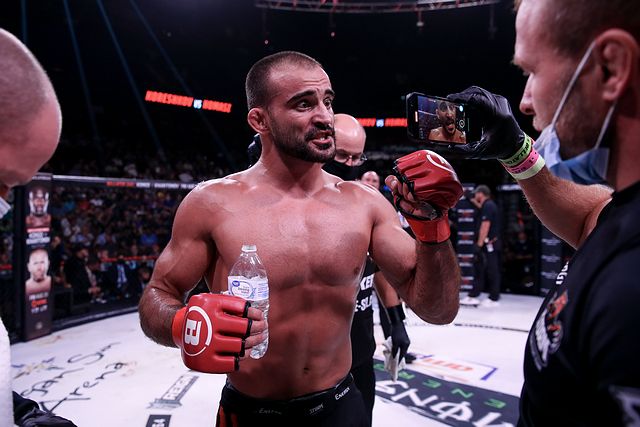Boxing’s Heavyweights of the 1970s: Joe Frazier
Not much can be said about “Smokin’” Joe Frazier that has not already been said.
Advertisement
Related » Boxing’s Heavyweights of the 1970s: Larry Holmes
This was also where Frazier as an amateur standout met Yancey “Yank” Durham, who, along with Duke Dugan, convinced him to go to the Olympics as an alternate after losing a disputed decision to Buster Mathis -- the only man to defeat Frazier during the Olympic Trials. When Mathis bowed out of the tournament with an injury and what was reportedly a lax attitude towards training, Frazier stepped in to bring home the gold medal for the United States. He fought the last bout with a broken thumb.
Looking back, it seems as though Frazier’s legendary left hook was
a thing of destiny. A childhood accident injured his left arm,
preventing him from straightening the limb fully. It was forever
locked into a semi-hook position, making the delivery of that blow
virtually natural to the construct of his body.
Frazier’s early career went well, as he won a few bouts by knockout. However, a freak training accident cost him most of the vision in his left eye. The broken bolt of a speedbag station sent shards of metal into his eye, and a cataract developed. He underwent surgery to remove the cataract, but the procedure could not restore his vision. It was an issue doctors appeared to ignore during his subsequent pre-fight physicals. Only a year into the process, Durham brought in Eddie Futch as an assistant trainer. Futch pulled plenty of strings in Frazier’s career without taking much of the credit: training organization, fight strategy and matchmaking. Durham likely knew Futch could offer an experienced perspective in building Frazier’s career and assuring he would get where they needed him to go. Futch also adjusted Frazier’s style, implementing the ever-present upper-body movement that made him difficult to hit and allowed him to seamlessly load up his punches at full force. Futch was based in Los Angeles at the time and had to be flown to Philadelphia for final prep work and disclose strategy to the team for each Frazier fight.
Related » Boxing’s Heavyweights of the 1970s: Ken Norton
Durham died in 1973, less than two weeks before Ken Norton dropped a decision to Muhammad Ali in their rematch. Futch was asked to take over as head trainer, and Norton’s people told him he would have to choose between the future WBC champion and Frazier. He chose Frazier. Under Futch, Frazier took noted wins over Mathis, George Chuvalo and Jerry Quarry, all by stoppage. He did away with Chuvalo in four rounds despite not being able to put him on the floor. Frazier was known for his durability, and his heart and fighting spirit carried him through pain and damage. He had an incredible sense of self-belief, even without the same external motivational tools Norton used. From childhood, Frazier was positive he was a winner.
Futch likely saw this trait early on and noticed that Frazier was not, as some thought, exceptionally durable. What he had was exceptional mental toughness, even to a fault. Frazier always waded into trading range with little regard for his well-being, hence the need to improve his defense and give him tools to slip, ride and roll with punches. He also learned to efficiently utilize his right hand for defense, as he looked to gauge distance with the left. Frazier had an underrated right hand, and he could throw it true. However, it paled in comparison to his left hook, which few could withstand. There are stories about Frazier walking into gyms where other heavyweights knew he was looking for sparring partners, and they would quickly hide or attempt to leave without being seen. Sparring with him was not pleasant, as he was just as ferocious in training. The scenes in “Rocky” in which Rocky Balboa punched meat carcasses and ran up the stairs at the Philadelphia Museum of Art were taken from Frazier. His ferocity, the defensive prowess Futch added and the potency of his punches garnered him a victory over Ali in their first bout on March 8, 1971 at Madison Square Garden. It was billed as the “Fight of the Century.” Frazier floored Ali late in the fight and sent him to the hospital with a grotesquely swollen jaw.
Frazier’s star fell rather quickly, as he ran into a monster named George Foreman, who seemed to have his number. It should be noted that his body had been failing him for some time. As mentioned previously, he fought through a broken thumb and an irreparably damaged eye; and after his first encounter with Ali, he was diagnosed with high blood pressure. He also had kidney problems. There was always a physical ailment looming over Frazier. He fought on with relentless pressure, going at his opponents in that two-step rhythm, finding his range and targeting foes with his left hook. By the time Frazier met Foreman for a second time in 1976, he was a shell of his former self. It was a deterioration consistent with other fighters of his ilk. They burned out quickly in comparison to more safety-oriented peers. Nevertheless, Frazier left his mark as the man who handed Ali his first loss and in the process gave us perhaps the most potent left hook in boxing history.
Luis Monda is currently a full-time boxing trainer at Johnny Tocco's in Las Vegas, which is the oldest gym in Sin City. Luis has a deep knowledge of combat sports history, and has spent significant time researching lineages in boxing, specifically. He has been involved in the local-fight scene for nearly a decade: first as a potential competitor, then as the manager of Tocco's, and now as an instructor to boxers, kickboxers, and mixed martial arts fighters.
More




 Boxing Coverage on Sherdog.com
Boxing Coverage on Sherdog.com


